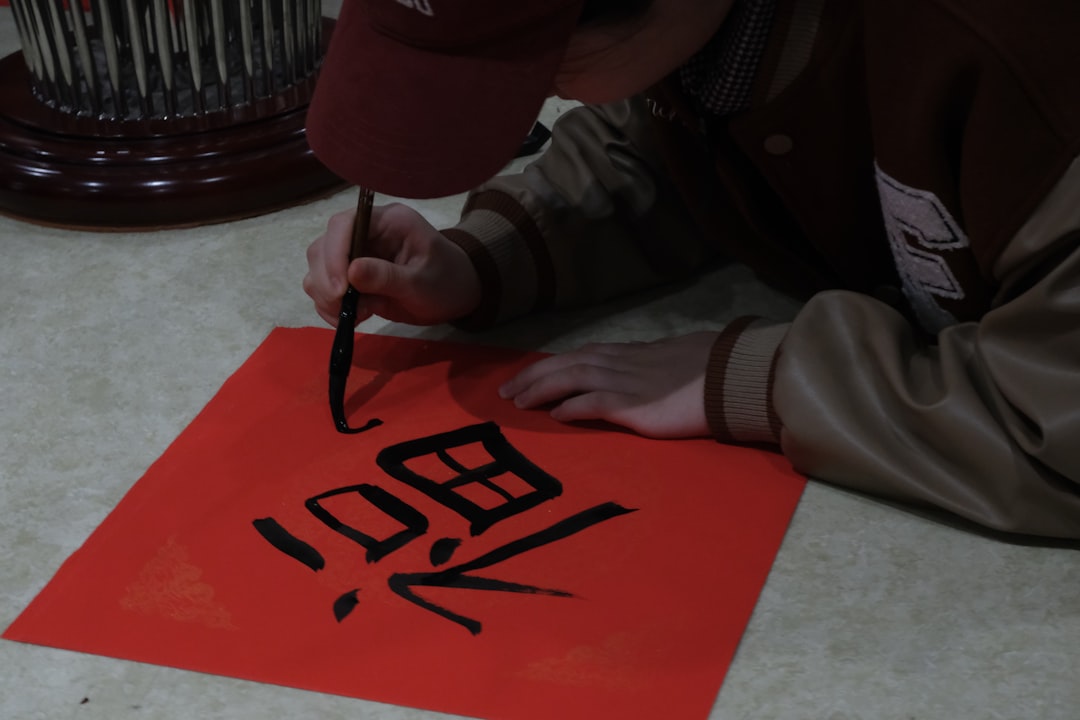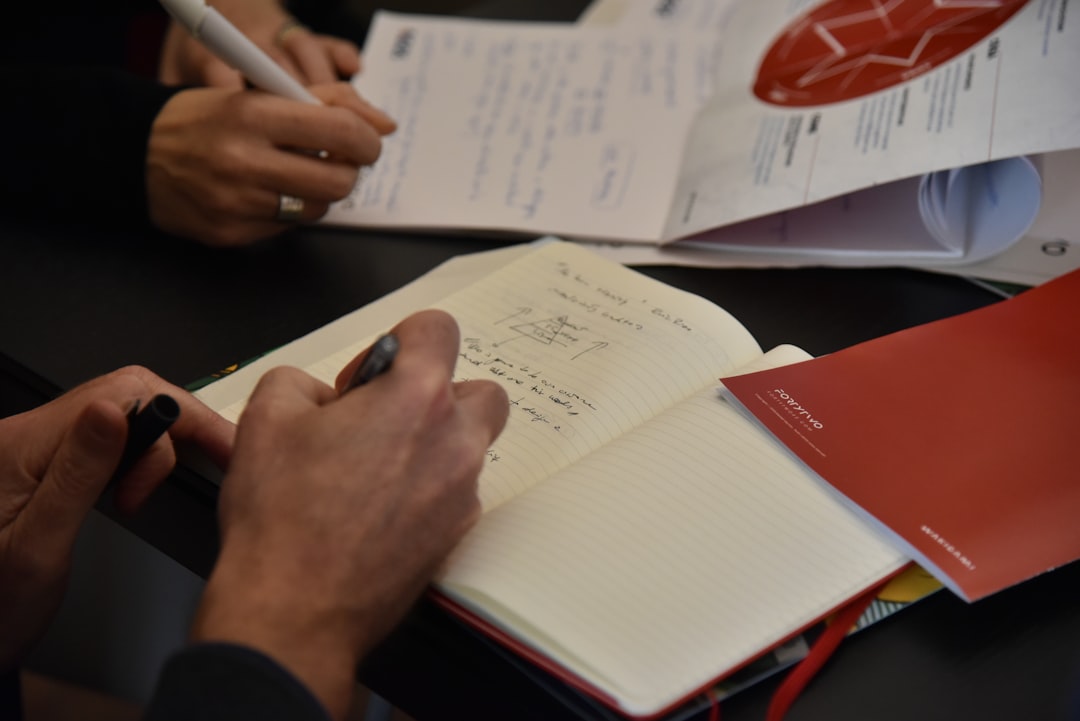

Engage prospects with a scan and streamline customer engagement with FREE QR code marketing tools by Sona – no strings attached!
Create a Free QR CodeFree consultation

No commitment

Engage prospects with a scan and streamline customer engagement with FREE QR code marketing tools by Sona – no strings attached!
Create a Free QR CodeFree consultation

No commitment
Autograph supply companies operate at the intersection of enduring collector traditions and evolving digital expectations. Many organizations still struggle with analog processes such as relying on printed catalogs, static event signage, and scattered communication channels, making it difficult to convert in-person interest into valuable, trackable leads. One key frustration is that high-value prospects interact with physical memorabilia displays or limited-run signature pens and then walk away untracked, leaving lost opportunities.
As collector behavior digitizes, QR codes in marketing stand out as a practical bridge connecting the tangible world of signature supplies and memorabilia with dynamic digital experiences. No apps or complex processes are needed—just a quick scan that closes gaps between product discovery, lead capture, and authentication workflows. By integrating QR codes, companies can overcome historic challenges of losing visibility into who is interested while also enabling richer CRM insights and timely engagements that outpace the competition.
This shift means every collector engagement, from event attendance to product authentication, can become both measurable and actionable. Whether tracking event foot traffic, verifying memorabilia in real time, or enriching campaign data for smarter targeting, QR code solutions introduce a layer of operational agility that addresses longstanding pain points and prepares businesses for sustainable digital growth.

A persistent challenge for autograph supply companies is missing out on high-intent prospects because interactions at trade shows, signing events, or through product packaging too often go untracked or unsupported by digital tools. This can lead to incomplete CRM records and a fragmented sales funnel where qualified leads are lost. QR codes provide a practical entry point to address these gaps, with QR marketing ideas embedded directly into the collector’s physical journey.
When planned well, QR programs can replace outdated workflows such as paper sign-up sheets, brochure-only product explanations, or manual authentication request forms. A scan on a poster, counter display, or COA card can immediately trigger a mobile-optimized form via Google Forms QR, a product microsite, or an authentication verify page. The result is fewer missed opportunities, richer data, and smoother handoffs from physical interest to digital action.
Modern platforms such as Sona QR make it possible to automate data capture and audience enrichment. Every scan can update a CRM record, trigger a nurture sequence, or create a task for sales, which means each interaction can move prospects closer to purchase or deepen loyalty post-sale.

Autograph supply companies frequently struggle to bridge the data divide between in-person collector encounters and digital marketing programs. A typical scenario is prospects browsing memorabilia displays or attending live signings but remaining anonymous, which prevents timely engagement and leaves sales teams in the dark. This lack of transparency into anonymous traffic stalls growth and cedes advantage to competitors who capture collector interest first.
QR codes eliminate this blind spot by turning every printed or physical touchpoint into a gateway for action. A poster near a signing table can route to VIP signup, a COA insert can route to a verification page, and a direct mail piece can route to a limited-offer bundle. These scans can be individually tracked so you can measure which assets worked, when they worked, and for which audience segments. See this marketing guide for strategy tips.
The benefit is not only convenience but full-funnel intelligence. Autograph supply companies can finally answer which event signage drove preorders, which retailer rollouts created the most registrations, and which SKUs generate repeat purchases after post-scan coupons or tutorials.

One common pitfall is relying solely on generic URLs or paper-only collateral at events. You lose context and segmentation that would inform better follow-up. By selecting the right QR code formats for each touchpoint, you streamline the path to action and capture meaningful data that aligns with intent.
For crowded events, consider adding a Wi-Fi access QR code at your booth to encourage longer dwell time and facilitate easy scanning of your other assets. With Sona QR, you can manage these varied formats from one dashboard and switch destinations on the fly as inventory or promotions change.

Even well-earned foot traffic at collector events, retail displays, or trade shows often does not translate into tracked leads. The result is lost upsell and follow-up opportunities. QR codes should be embedded where collectors already look and interact so your marketing and sales teams can capture demand in context.
Start by listing every place you physically meet your audience. Think about convention aisles, shop counters, shipping boxes, and COA enclosures. For each location, define the one action you want people to take. Then place a QR code with a clear promise and a fast digital destination to perform that action.
Deploying QR codes across these channels drives net-new leads while revealing hidden demand and purchase cues. The insight you gain can reduce churn among existing customers and increase repeat orders with timely incentives.

Data silos and slow, manual follow-up often hide the strongest buying signals. QR codes can unlock those signals in real time and direct them to the teams and tools that act on them. A strong QR program does not just collect scans. It turns each scan into a valuable, context-rich data point that advances the collector’s journey.
Focus on high-impact interactions that happen frequently or carry significant value. The following use cases address common gaps in the autograph supply category and deliver measurable outcomes when implemented with care.
Each use case takes an offline moment and gives it a digital outcome. The result is a more modern customer experience and a more accurate signal of interest and intent that your systems can act upon.
Each QR scan contains context: where it happened, when, and in response to which prompt. When you deploy multiple codes across the journey, you can segment your audience automatically and feed those segments into CRM and ad platforms for precise retargeting.
Start by defining the lifecycle stages that matter most for your brand. For autograph supply companies, typical stages include pre-event awareness, onsite engagement, post-purchase registration, and ongoing collection care. Assign a unique QR code to each stage and destination so scans act as self-selected signals of intent.
For this vertical, consider distinct groups such as first-time collectors versus high-value investors, sports memorabilia buyers versus pop culture enthusiasts, and retail browsers versus live-event attendees. With Sona QR, data flows from each code into lists and automations that nurture these segments based on real actions rather than assumptions.
QR codes do not live in isolation. They are connectors that make print media measurable, in-person moments actionable, and digital campaigns more informed. When you treat QR codes as the offline onramp into your digital engine, every channel becomes more accountable and more effective.
Start by listing your core channels: trade shows, retail shelves, direct mail, influencer kits, and digital signage at events. Assign a QR-enabled action to each one and use consistent UTMs to measure response across the mix. When multiple placements route to the same destination, give each its own code so you can compare performance and reallocate budget intelligently. See the use case library for placement ideas by channel.
With a centralized platform such as Sona QR, you can manage codes across channels, monitor performance, and sync scan data with your CRM and ad accounts. This creates a connected funnel where offline interest fuels online engagement and measurable revenue.
A focused checklist keeps your QR strategy grounded in outcomes rather than tactics. Before you print a single code, align each asset with a clear goal, destination, and tracking plan. Treat codes like media placements that require creative, analytics, and conversion targets.
Use the following steps to design, deploy, and optimize a QR-driven program that fits the realities of the autograph supply market. Adapt details to your product mix, event calendar, and channel strategy.
Start with the business challenge that matters most right now. Common goals include replacing manual event sign-ins with instant check-ins, speeding up authentication requests, capturing product registrations from packaging, and reducing the gap between display interest and sales conversations. Select one use case where impact will be visible to the team and measurable in your dashboards.
Define the exact action you want the scanner to take and why it matters. For example, a scan at a live signing could route to a VIP registration form that unlocks early access to a limited-run pen. The outcome is more complete attendee data, better segmentation for follow-up, and a clearer path to conversion in the days after the event.
Choose between static and dynamic codes based on your need for flexibility and measurement. Static codes are suitable for fixed destinations such as a PDF catalog, while dynamic codes provide editability and analytics that are essential for marketing campaigns and changing schedules.
For autograph supply companies that operate on event calendars and limited editions, dynamic codes are usually the better fit. They let you update landing pages when inventory changes, pivot offers for different audiences, and keep printed assets useful after the event.
Design your codes for real-world environments like crowded aisles, low light, and fast-moving lines. Clarity and contrast matter, as does the surrounding message that tells people why they should scan now. Incorporate your logo and brand colors without sacrificing scannability.
Always test your codes across devices, operating systems, and camera apps. Test at realistic distances and angles, and on the surfaces where the codes will live: glossy packaging, matte posters, or curved table tents. Fix readability issues before going to print. Watch a short video tutorial.
Roll out your first set of codes where missed opportunities are most painful. For many companies this means event signage, packaging inserts, and direct mail for major releases. Give each placement its own unique code so you can see which touchpoints deliver value and then scale the winners to new locations or formats.
Deploy in waves and keep creative variables controlled. Change one thing at a time: the offer, the design, or the placement. Document your decisions and results so your team can learn and standardize best practices over time.
Tracking is the difference between a QR tactic and a QR strategy. Set up UTM parameters for every destination and keep a registry of code-to-campaign mappings. Use your platform’s dashboard to see scans by time, location, and device, and follow each scan through to form submission, event attendance, or purchase.
Run A/B tests on landing pages, CTAs, and code designs. Look for drop-off points in your flows and remove unnecessary fields or steps. Share performance learnings with your sales and ops teams so they can adapt in real time during events or promotions. Standardize with UTM tracking.
The lack of account-level insight hinders timely and personalized engagement. QR analytics reset this dynamic by linking real-world interest to identifiable signals you can act on. When your codes collect both scan metadata and downstream behavior, your marketing shifts from generic blasts to context-aware communications.
At a baseline, you should capture scan counts, timestamps, devices, and locations. More advanced setups layer in identity resolution, session stitching, and multi-touch attribution so you can see how scanning contributes to pipeline and revenue. A collector who scans at a booth, registers a product at home, and later redeems a loyalty offer represents a coherent journey that can be measured and optimized.
Sona QR captures real-world engagement at the source. Sona.com turns that engagement into actionable insights by tying scans to people, journeys, and revenue so your QR strategy becomes a performance engine rather than a novelty.
Scaling QR success is about clarity, consistency, and convenience. The clearer the promise at the point of scan, the more consistent your creative and tracking are across placements, and the more convenient the destination experience, the better your results will be.
Focus on the media types you already deploy most: event signage, packaging, and direct mail. Equip staff to promote scanning with simple scripts and prompts. Then automate as much of the post-scan journey as possible so value arrives quickly and reliably without manual handoffs.
Creative deployment examples for this vertical include a QR code printed on COA cards that unlocks a digital provenance timeline and a QR code on consignment drop-off forms that starts a live status tracker for sellers. Both convert analog friction into digital transparency and trust.
For autograph supply companies, QR codes address persistent hurdles by illuminating critical moments that analog processes and generic analytics often miss. They capture high-intent interest at events, on packaging, and across retail displays, then turn that interest into measurable action tied to marketing and revenue outcomes. The shift is practical and immediate: every scan becomes a signal that informs smarter engagement and faster conversions.
As the memorabilia market evolves, companies can no longer afford to let high-value prospects fall through the cracks between physical and digital interactions. QR codes meet collectors where they are and move them forward with clarity, speed, and accountability. Start with your most active event, product, or direct mail program. Deploy dynamic codes with clear CTAs, track performance end to end, and sync data to your CRM. With Sona QR for creation and management, and Sona.com for attribution and journey analytics, you can capture demand at the source and convert it into measurable growth, deeper collector relationships, and resilient performance in a category defined by both tradition and transformation. Start creating QR codes for free.
QR codes have transformed autograph supply companies from simple product providers into interactive, conversion-driven businesses. Whether it’s attracting new collectors, enhancing the customer’s buying journey, or providing instant access to exclusive content and authentication, QR codes replace static labels with engaging, measurable touchpoints that boost sales and brand loyalty. Imagine knowing exactly which autograph items spark the most interest and being able to optimize your marketing on the fly.
With Sona QR, autograph supply companies can create dynamic, trackable QR codes in seconds, update campaigns instantly without reprinting, and link every scan directly to revenue growth. This means no missed opportunities and smarter, more effective promotions tailored to your audience’s behavior. Start for free with Sona QR today and turn every autograph interaction into a lasting connection and a closed deal.
The article does not specify particular autograph supply companies but highlights how companies like Sona QR provide tools to enhance autograph supply business growth through QR code integration.
High-quality autograph supplies are typically available at signing events, retail displays, trade shows, and through autograph supply companies that integrate digital tools like QR codes to enhance collector engagement.
Choose autograph supplies that offer features like authentication via QR codes on COA cards or tamper-evident stickers, enable easy registration and verification, and come from companies that provide digital engagement tools for tracking and authenticity.
Collectors can find autograph supplies such as COA cards with QR codes, tamper-evident stickers, signature pens, packaging inserts with registration codes, and memorabilia displays enhanced with digital engagement tools.
Authenticity can be ensured by using supplies with embedded QR codes that link to real-time verification portals, tamper-evident stickers, and COA cards that capture and confirm product metadata and purchase context.
QR codes bridge physical collector interactions and digital marketing by enabling instant lead capture, product registration, authentication verification, and tracking of campaign performance across multiple channels.
Common QR code formats include web links for product details, vCards for contact sharing, forms for registrations and RSVPs, SMS and email pre-fills for support, and dynamic QR codes for flexible campaign updates.
QR codes should be placed on event signage, product packaging and inserts, COA cards, direct mail pieces, retail displays, badges, and shipping boxes to capture collector interest and enable seamless digital actions.
Companies can track scan counts, timestamps, devices, locations, and campaign codes using platforms like Sona QR, integrating data with CRM and marketing tools to measure engagement, attribute revenue, and optimize campaigns.
Steps include choosing a clear use case, selecting static or dynamic QR codes, designing and testing codes for readability, deploying across key channels with unique codes, and tracking performance to optimize results.
Use Sona QR's trackable codes to improve customer acquisition and engagement today.
Create Your FREE Trackable QR Code in SecondsJoin results-focused teams combining Sona Platform automation with advanced Google Ads strategies to scale lead generation

Connect your existing CRM

Free Account Enrichment

No setup fees
No commitment required

Free consultation

Get a custom Google Ads roadmap for your business






Launch campaigns that generate qualified leads in 30 days or less.
